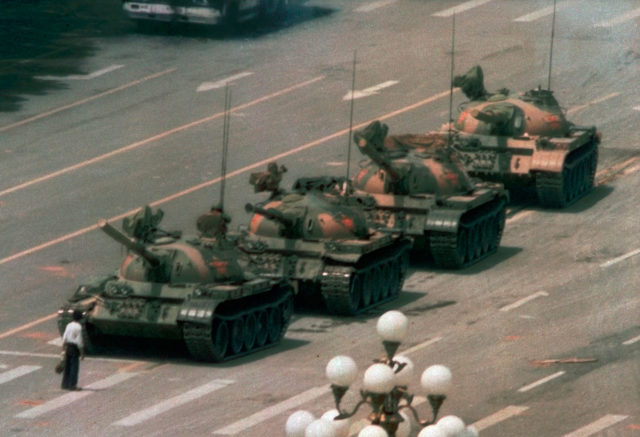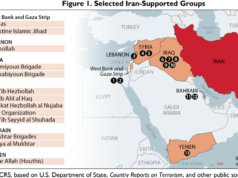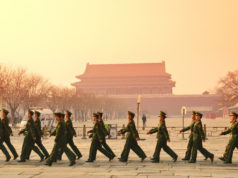Thirty years ago, on June 4, 1989, the Communist dictators of China slaughtered thousands of unarmed protesters in Beijing’s Tiananmen Square. Like the assassination of President Kennedy and the attacks of 9/11, the Tiananmen Square massacre is one of those indelible horrors that no one forgets. If you were old enough to follow what was happening in China during the weeks preceding June 4, you will always remember where you were when you learned of the bloodbath unleashed by the tyrants.
The world had been enthralled by China’s intense outpouring of pro-democracy fervor. In Beijing and dozens of other Chinese cities, millions of people had taken to the streets in a dazzling plea for liberty and political reform. The protests had begun in mid-April, when thousands of students thronged Tiananmen Square, calling for “minzhu” — democracy. To demonstrate that self-rule and freedom are worth suffering for, thousands embarked on a hunger strike. Across the nation, citizens from every walk of life — mechanics and teachers, railway workers and civil servants, policemen and journalists, high school kids and elders — rallied to the students’ support. In the heart of the square rose a 30-foot-high “Goddess of Democracy,” a handmade papier-mache version of America’s Statue of Liberty. The world watched, with astonishment and awe, the greatest demonstration in Chinese history. And when convoys of People’s Liberation Army troops moved on Beijing on the morning of June 3, only to be driven back, it appeared that communist rule in Asia was about to implode.
Twenty-four hours later, those expectations were savagely destroyed.
It was still dark on the morning of June 4 when tanks and armored personnel carriers began making their way down Changan Avenue — the Avenue of Eternal Peace — toward Tiananmen Square. This time, they didn’t turn back. Troops fired into the crowds that gathered at every intersection. Unarmed demonstrators — men, women, teens — were cut down by the hundreds. As Western journalists rolled tape, the People’s Liberation Army aimed automatic weapons into the knots of protesters and pulled their triggers. “There were pools and smears of blood up and down the avenue as well as bodies of the dead,” one American reporter wrote. “Most of the wounds were in the chest and stomach.”
For China’s oppressed people, all hope of freedom and democracy died on June 4.
But it was on June 5 that the most iconic image of those days ricocheted around the world. One day after the slaughter, as a column of tanks began to leave Tiananmen Square, a lone Chinese man carrying — of all things — two shopping bags stepped in their path. The lead tank tried several times to maneuver around the man rather than crush him. Each time he shifted his position to cut them off. It was an incomprehensibly audacious, courageous, riveting act of defiance. “The moment instantly became a symbol of the protests,” The New York Times’s Patrick Witty later recalled, “as well as a symbol against oppression worldwide — an anonymous act of defiance seared into our collective consciousness.”
Tiananmen Square: What happened on June 4 was a powerful reminder that terror and murder are the defining characteristics of communist regimes. What happened on June 5 was, in its way, a reminder of an even more powerful truth: No tyranny will last forever. The human spirit is indestructible, and a remnant will always survive.
Jeff Jacoby is a columnist for The Boston Globe, and the author of a weekly email newsletter, Arguable, where this first appeared.






